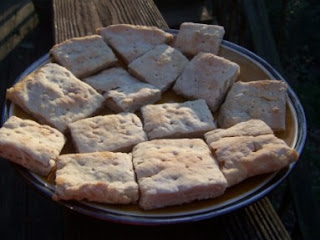
Known as "The Destroying Angel," Orin Porter Rockwell was born on June 28, 1813 in Belchertown, Hampshire County, Massachusetts, to Orin and Sarah Rockwell. He was baptized into the
Church of Jesus Christ of Latter-day Saints in 1830, and married Luana Beebe on February 2, 1832 in Jackson County, Missouri.
Porter Rockwell was Joseph Smith's and Brigham Young's bodyguard, the former prophesying to him that if he never cuts his hair or beard, then no bullet nor blade could harm him.
Rockwell was accused of attempting the assassination of Lilburn Boggs, the former governor of Missouri, who signed Executive Order 44 on October 27, 1838 known as the "Extermination Order" evicting Mormons from Missouri by violent and deadly means.
A grand Jury was unable to find sufficient evidence to indict him, though, they were convinced by his reputation as a deadly gunman and his statement, "I never shot
at anybody. If I shoot, they get shot!... He's still alive, ain't he?"
Rockwell was thrown in an unheated dungeon for nine months without any bedding, given horrible food that dogs would refuse. One day Sheriff Reynolds came to the jail and offered Porter a large sum of money if he would take the Sheriff to the prophet to see him captured. Porter's respons was, “I will see you damned first.”
After Porter was released from jail, he walked most of the way to Nauvoo, Illinois. He arrived at Joseph Smith’s house on Christmas Day in 1843, as the Prophet and his friends were having a supper party. Joseph Smith would later say, “a man with his hair long and falling over his shoulders, and apparently drunk, came in and acted like a Missourian. I requested the captain of the police to put him out of doors. A scuffle ensued, and … to my great surprise and joy untold, I discovered it was my long-tried, warm, but cruelly persecuted friend, Orrin
Porter Rockwell.”
Joseph Smith's
death at the hands of a mob at Carthage, Illinois in 1844, spurred a Mormon exodus from
Nauvoo. It was during this time that Rockwell shot and killed Frank
A. Worrell, who was arguing with Hancock County Sheriff Jacob Backenstos. Rockwell
had been hastily deputized only moments before the shooting, a fact which made
the incident no less sensational when it was learned that the dead man had been
the militia lieutenant in charge of protecting Joseph Smith when the Mormon
prophet was assassinated the year before.
Porter went west with the first party of pioneers. He believed that the Prophet Joseph would have wanted him to do that. His services as a scout and game hunter were invaluable.
In 1849 Porter Rockwell was appointed deputy marshall of Great Salt Lake City, and he was a peace officer in Utah until his death. When pursuing lawbreakers, Porter was relentless, and his endurance was legendary. He would follow a trail at a gallop in his buckboard where others would walk their horses, searching for clues.
Porter Rockwell passed away on June 9, 1878, in Salt Lake City, Utah. He died of natural causes, fulfilling Joseph Smith's prophesy. Porter was engaged in many fights, and was deputy, scout, and lawman for the Church, and he never got hit by a bullet, nor a blade. He died of old age.
 In Mormonism, members of the Church of Jesus Christ of Latter-day Saints believe in both the Bible and the Book of Mormon. Leaders talk about how the Book of Mormon is the "Keystone" of their religion. They also talk about how both books are not overpowering one another, but contradict each other. They said the the Book of Mormon is "Another testament of Jesus Christ."
In Mormonism, members of the Church of Jesus Christ of Latter-day Saints believe in both the Bible and the Book of Mormon. Leaders talk about how the Book of Mormon is the "Keystone" of their religion. They also talk about how both books are not overpowering one another, but contradict each other. They said the the Book of Mormon is "Another testament of Jesus Christ."  The Bible, one of the most published books in American history, gives an account of Jesus Christ and the prophets in the Middle East, mainly Israel. In the Bible, it talks about Jeremiah preaching to the people of Jerusalem to repent. In that time frame, there was another prophet. His name is Lehi. He also preached to the people of Jerusalem to repent. They wanted to kill him, so he and his family fled. That account is recorded in the Book of Mormon. The Book of Mormon gives an account of Prophets in the America's. It talks about many battles, and the destruction of two peoples, the Nephites, and the Jaredites. It also has an account of Jesus Christ coming to the America's, ordaining disciples there.
The Bible, one of the most published books in American history, gives an account of Jesus Christ and the prophets in the Middle East, mainly Israel. In the Bible, it talks about Jeremiah preaching to the people of Jerusalem to repent. In that time frame, there was another prophet. His name is Lehi. He also preached to the people of Jerusalem to repent. They wanted to kill him, so he and his family fled. That account is recorded in the Book of Mormon. The Book of Mormon gives an account of Prophets in the America's. It talks about many battles, and the destruction of two peoples, the Nephites, and the Jaredites. It also has an account of Jesus Christ coming to the America's, ordaining disciples there. 










